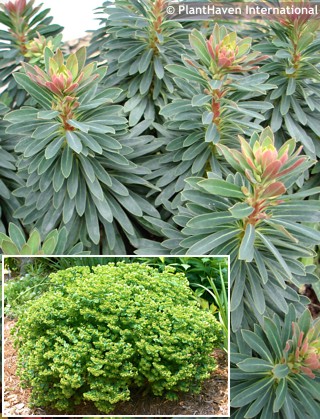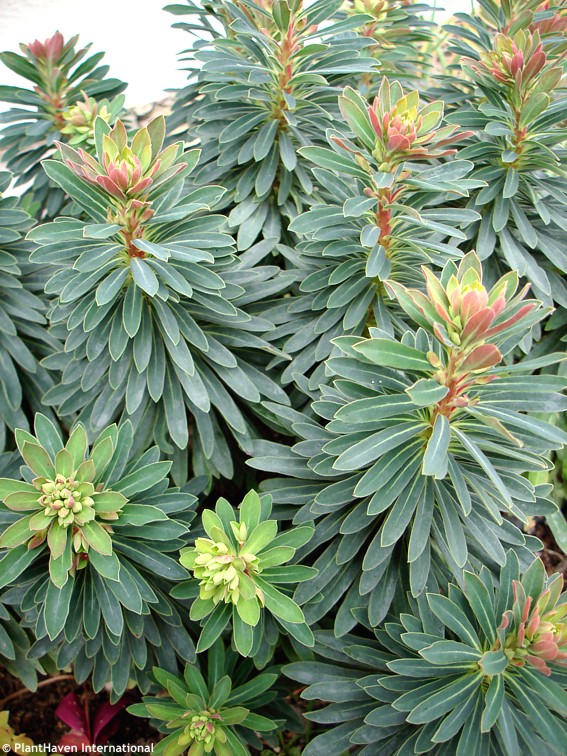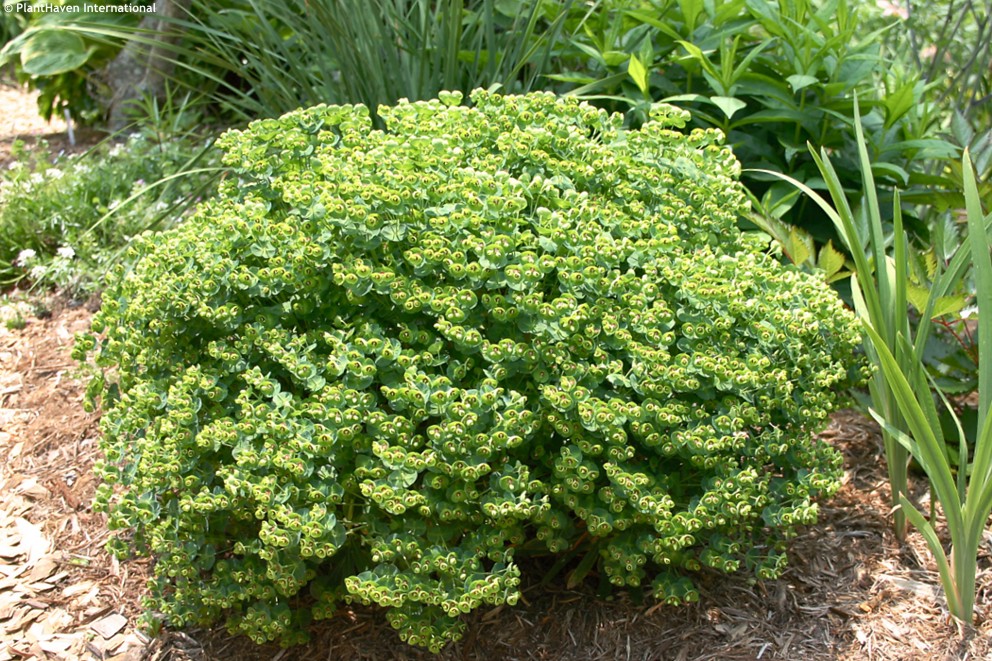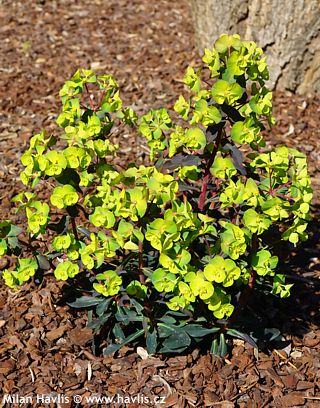Euphorbia x martini 'Waleutiny' TINY TIM® Martin's spurge
size/type
low perennial,low perennial
usual height
0,2-0,4m
usual width
0,3-0,5m
leaves
evergreen broadleaf
colour of leaves
flowers
showy
colour of flowers
blooming time
May-July
location
full to partial sun
USDA zone (lowest)
7 (down to -23°C)
winter protection
for zone 5+6

for zone 7

categorized
Euphorbia
Euphorbia - spurge represents a large family of plants where the most eye-catching ones are not hardy enough for Central European continental climate of zone 6. However, there are also hybrids where one of the parents bear the beauty of the tender species, and the other improves hardiness. Such as euphorbia x martini, a cross between e. amygdaloides and e. characias.Description of the plant:
TINY TIM® is semi-woody perennial Martin's spurge found as a natural mutation of euphorbia x martini from December 2000. A sport was found in Alberton in West Sussex, United Kingdom, by Albert T.Crowther. It exhibits much slower growth, small size, and compact, uniform habit. Leaves are narrowly lance-shaped, mid to dark green with blue tones, and new top growths are always dark magenta purple to burgundy red. In warm winters (to about -20°C) they are reliably evergreen. In late spring and again in midsummer large inflorescences are produced in profusion, and they completely cover the plant. They are composed of small, lime green flowers with red centres. It flowers on previous year's wood so any pruning, if required, has to be done immediately after flowering in summer. All parts of the plant produce milky sap when cut, crushed, or bruised, that is toxic and can cause skin irritation. The plant was patented as PP16930 in 2006.
Spurge will grow in full sun in almost any well-drained garden soil provided it is protected wet conditions, mainly in winter. Its autumn foliage colour improves with the levels of nitrogen in the soil so a small dose of slow-release fertilizer would do the trick in late summer, but is not necessary. It is hardy to min. -24°C (USDA zone 6), possibly a few degrees more.
Last update: 08-11-2018
QUICK PRICE OVERVIEW
CURRENTLY SOLD OUT
WANT TO TRY A SIMILAR PLANT?

















